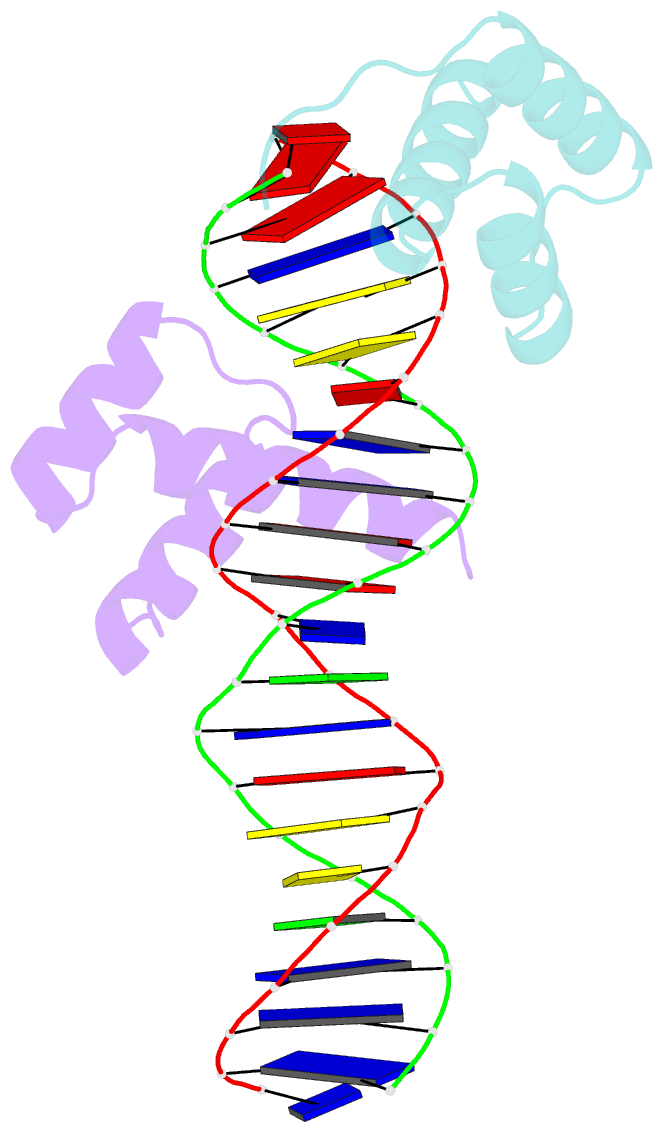Summary information and primary citation
- PDB-id
- 3hdd; SNAP-derived features in text and JSON formats;
DNAproDB
- Class
- transcription-DNA
- Method
- X-ray (2.2 Å)
- Summary
- Engrailed homeodomain DNA complex
- Reference
- Fraenkel E, Rould MA, Chambers KA, Pabo CO (1998): "Engrailed homeodomain-DNA complex at 2.2 A resolution: a detailed view of the interface and comparison with other engrailed structures." J.Mol.Biol., 284, 351-361. doi: 10.1006/jmbi.1998.2147.
- Abstract
- We report the 2.2 A resolution structure of the Drosophila engrailed homeodomain bound to its optimal DNA site. The original 2.8 A resolution structure of this complex provided the first detailed three-dimensional view of how homeodomains recognize DNA, and has served as the basis for biochemical studies, structural studies and molecular modeling. Our refined structure confirms the principal conclusions of the original structure, but provides important new details about the recognition interface. Biochemical and NMR studies of other homeodomains had led to the notion that Gln50 was an especially important determinant of specificity. However, our refined structure shows that this side-chain makes no direct hydrogen bonds to the DNA. The structure does reveal an extensive network of ordered water molecules which mediate contacts to several bases and phosphates (including contacts from Gln50), and our model provides a basis for detailed comparison with the structure of an engrailed Q50K altered-specificity variant. Comparing our structure with the crystal structure of the free protein confirms that the N and C termini of the homeodomain become ordered upon DNA-binding. However, we also find that several key DNA contact residues in the recognition helix have the same conformation in the free and bound protein, and that several water molecules also are "preorganized" to contact the DNA. Our structure helps provide a more complete basis for the detailed analysis of homeodomain-DNA interactions.





